If you have recently gotten a tattoo, you may be wondering how long you should keep the second skin on your tattoo. Knowing how long to keep second skin on your tattoo is important for protecting your tattoo and making sure it heals properly. This article will explain how long you should keep second skin on your tattoo, what to look for when determining when to take it off, and other tips for taking care of your tattoo.
Contents
What is Second Skin?
Second Skin is a clear, flexible, waterproof adhesive bandage that is used to protect wounds and tattoos. It is made of a polyurethane film that is highly breathable and helps to retain heat, which aids in the healing process. Additionally, Second Skin is designed to be comfortable, allowing the wearer to move freely and not feel restricted by the bandage. The adhesive bandage can be cut to size and is designed to stay in place even in wet conditions.
Second Skin is an ideal way to protect a fresh tattoo as it can help to keep the area clean, prevent infection, and protect the delicate skin from irritation. It should be applied immediately after the tattoo is finished and should be kept on for several days. However, it is important to know when to take Second Skin off tattoo in order to allow the skin to breathe and start the healing process.
How Do Second Skins Work on Tattoos?
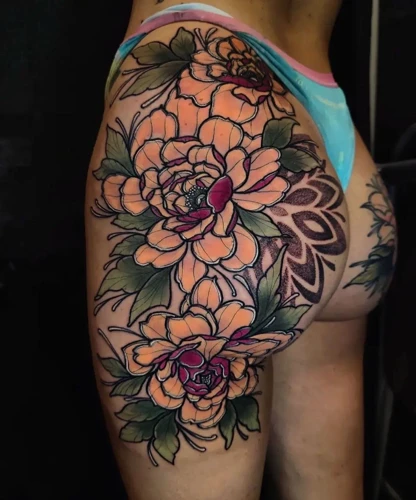
Second skins are a type of adhesive bandage specifically designed for tattoos. They are made from a thin, breathable material that sticks to the skin and allows the tattoo to heal without rubbing against clothes or other objects. The adhesive is strong enough to keep the skin in place, while still allowing the skin to breathe and stay hydrated. Second skins also provide protection against dirt, germs, and other contaminants that can cause irritation or infection.
When applied to the tattoo, the second skin helps the tattoo heal faster by keeping the area clean and protecting it from friction. It also helps to keep the area moisturized and the tattoo ink in place. The second skin should be changed every few days to ensure that the tattoo is receiving the proper care and healing properly.
The second skin should be removed when the tattoo is healed and the healing process is complete. It is important to follow your tattoo artist’s instructions on how to care for your tattoo, including how long to keep the second skin in place. Keeping the second skin on too long can cause the tattoo to become irritated or infected.
When to Put Second Skin on a Tattoo?
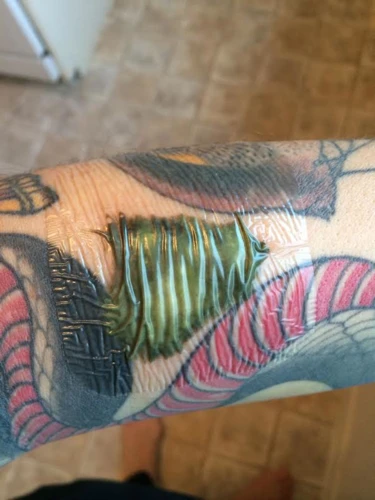
Second Skin is a medical bandage specifically designed for healing tattoos. It is made of a breathable, waterproof, and flexible material that helps keep the tattooed area clean and protected while allowing the skin to heal.
When to Put on a Second Skin Tattoo Bandage? After the tattoo artist has finished their work and has wiped away any excess ink and blood, they will apply a thin layer of petroleum jelly and a bandage, usually a second skin tattoo bandage. This should be left on for at least two hours, but no more than 24 hours. This will help protect the tattoo and keep it clean while it heals.
| When | What to do |
|---|---|
| After tattooing is finished | Apply a thin layer of petroleum jelly and a Second Skin tattoo bandage |
| 2-24 hours | Leave the bandage on |
| After 24 hours | Remove the bandage and follow aftercare instructions |
After 24 hours, the bandage should be removed and the area should be washed with lukewarm water and a mild cleanser. Once clean, the area should be treated with a thin layer of ointment and covered with a new bandage. The area should be kept clean and moisturized until the tattoo is completely healed.
How Long Should You Leave Second Skin on a Tattoo?
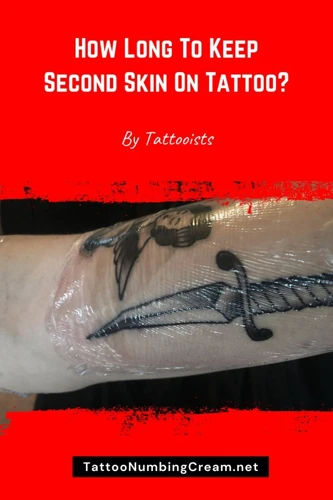
Tattoo aftercare is a critical step in ensuring your body art remains vibrant and free from infection. One of the most commonly used products for tattoo aftercare is Second Skin, an adhesive bandage designed to protect and provide a moist environment to promote healing. But how many days to leave second skin on tattoo is a common question.
The standard recommendation is to leave Second Skin on for a maximum of 5 days. After the 5-day period, you should remove the Second Skin and clean the tattoo with an antimicrobial cleanser or non-scented soap. Pat it dry with a clean cloth or paper towel and then apply a thin layer of fragrance-free moisturizer to the area. Make sure to avoid using any harsh products such as alcohol, hydrogen peroxide, and petroleum jelly.
It is important to note that the 5-day limit is just a general recommendation, and there are some cases where it is safe to leave Second Skin on for a longer period of time. If your tattoo is healing well and you experience no sign of irritation, you can leave the Second Skin on for up to 7 days. However, if there is any sign of irritation or infection, you should remove the Second Skin and contact your healthcare provider for further advice.
Ultimately, the best way to ensure your body art remains healthy and vibrant is to follow your tattoo artist’s aftercare instructions. This will vary depending on the type of tattoo, so make sure to ask your tattoo artist for specific advice regarding how long to leave Second Skin on your tattoo.
Is It OK to Leave Second Skin on a Tattoo for Longer Than Suggested?
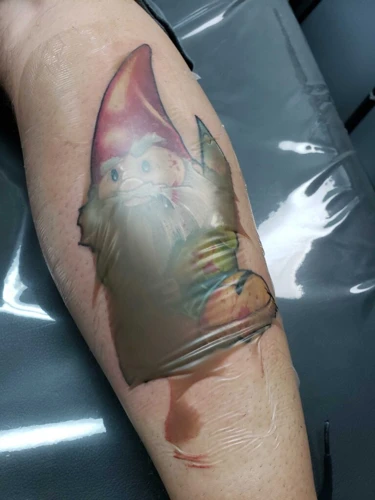
Second skin is a thin, plastic-like material that is used to protect a newly-inked tattoo as it heals. The product is meant to keep the area clean and free from bacteria, and to prevent the tattoo from becoming infected. Most tattoos require the second skin to be left on for a few days, but some people may wonder if it is safe to leave it on for longer.
The Answer: Generally, no. While leaving the second skin on for a few extra days may not cause any harm, it is not recommended. The longer the second skin stays on, the more difficult it will be to remove, and it may also trap moisture, which can cause the tattoo to become infected. Additionally, the skin needs to breathe in order for the healing process to be as effective as possible.
The Risk: If a tattoo is left covered for too long, the skin may become irritated or infected. The area may also become dry and flaky, leading to patches of color loss or fading.
Bottom Line: It is important to follow the instructions of the tattoo artist, and to remove the second skin as soon as it is advised. It is best to err on the side of caution, and to remove the second skin as soon as the healing process is complete.
Can You Re-use Second Skin on a Tattoo?
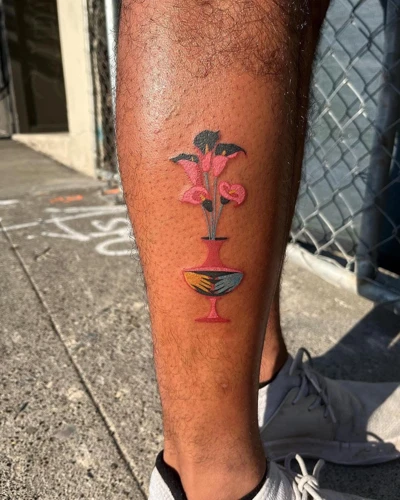
Second Skin is a type of medical adhesive tape used to help protect a new tattoo. It provides a barrier to keep dirt, bacteria, and other contaminants away from the new skin. While it can be beneficial to use Second Skin, it should not be re-used. It can break down with each use, losing its protective qualities and potentially causing irritation or infection to the tattooed area.
It’s important to only use a new piece of Second Skin each time you cover your tattoo. Using an old piece of tape can lead to an infection and can even cause an allergic reaction. It can also interfere with the healing process, increasing the risk of scarring or discoloration.
| Re-using Second Skin | Not Re-using Second Skin |
|---|---|
| Risk of infection | No risk of infection |
| Risk of allergic reaction | No risk of allergic reaction |
| Interference with healing process | No interference with healing process |
If you need to keep your new tattoo covered for an extended period of time, it’s best to use a fresh piece of Second Skin each time. This way, you can be sure that the adhesive is still effective and that the tattoo is properly protected.
Benefits of Using Second Skin on Tattoos
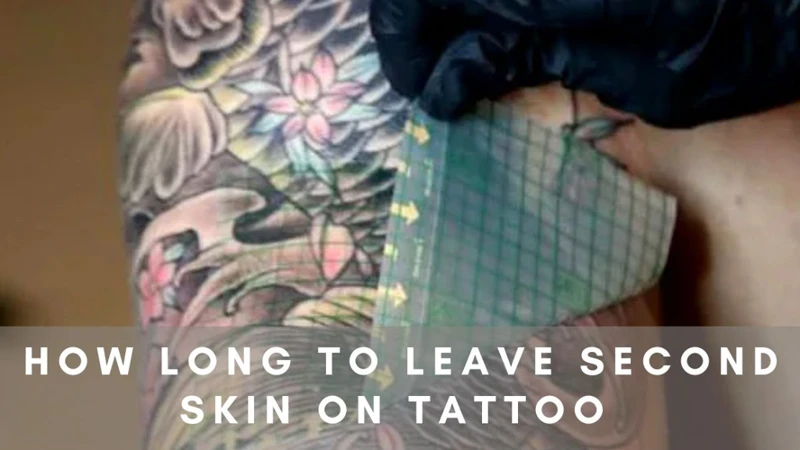
Protection: The primary benefit of using second skin on a tattoo is protection. The special material acts as a barrier between your tattoo and the environment, protecting it from dirt, debris, and other irritants that could damage the skin. It also helps to prevent infection by keeping bacteria and other pathogens away from the tattoo area.
Comfort: Second skin is designed to be comfortable and provide cushioning, which can help alleviate itching and reduce the risk of skin irritation during the healing process. It also helps to keep the tattoo area hydrated and prevents the skin from becoming too dry.
Flexibility: Second skin is highly flexible, allowing you to move freely without worrying about the tattoo being disrupted. This helps to keep the tattoo looking its best while it’s healing.
Durability: Second skin is designed to stay in place and remain durable even after multiple uses. This means that you can keep it on for as long as you need to, without worrying about it coming off or losing its protective properties.
Disadvantages of Using Second Skin on Tattoos
Second Skin is a product used to cover and protect tattoos while they heal. It can be a great way to ensure your new ink heals without any infection or irritation. However, it is important to know that using this product comes with some potential drawbacks.
- It can prevent the tattoo from breathing. Second Skin is designed to keep water, dirt, and bacteria out of the tattoo. Unfortunately, this also means it prevents oxygen from getting to the area as well. Without oxygen, the tattoo cannot heal properly.
- It can lead to infection. Because Second Skin prevents oxygen from getting to the area, it can also lead to bacterial growth. If left on the tattoo for too long, the bacteria can cause infection and irritation.
- It can cause allergic reactions. The adhesive used to hold the bandage in place can cause allergic reactions in some people. If you experience any itching, redness, or irritation, it is best to remove the bandage and seek medical attention.
- It can lead to swelling. If the bandage is applied too tightly, it can cause swelling and prevent the tattoo from healing properly.
It is important to remember that while Second Skin can be an effective way to protect your tattoo while it heals, it should not be left on for too long. Talk to your tattoo artist about the best way to care for your tattoo and how long the bandage should be left on.
Frequently Asked Questions
What is the Purpose of Second Skin on a Tattoo?
- Protects the tattoo from outside elements
- Prevents infection
- Keeps the area moisturized
- Encourages faster healing
- Prevents scabbing
Second skin is a thin, flexible material that is placed over a newly-inked tattoo. It is specifically designed to protect the skin from dirt, bacteria, and other outside elements. It also helps to keep the area moisturized, which can speed up the healing process. Additionally, it helps to prevent infection and scabbing, which can cause damage to the tattoo.
How Long Is Too Long?
Second skin should be removed from the tattoo once it starts to feel tight or uncomfortable. Leaving it on for too long can cause a build-up of sweat and bacteria, leading to infection. It is generally recommended to leave it on for up to 24-48 hours. To ensure your tattoo heals properly, make sure to keep it clean and moisturized during the healing process.
How often should I replace the second skin on my tattoo?
It depends on the healing process:
- During the first few days, you will need to replace the second skin every 1-2 days as your tattoo is healing.
- Once the tattoo is healed, you can reduce the frequency to every 1-2 weeks.
- If you find that the second skin is not keeping your tattoo sufficiently hydrated, you can increase the frequency of replacements for a few days.
It also depends on the size of the tattoo:
- Small tattoos require less frequent replacements than larger ones.
- For small tattoos, you may only need to replace the second skin every 2-3 weeks.
- For larger tattoos, you may need to replace the second skin every 1-2 weeks.
How Long Should You Keep Second Skin On Your Tattoo?
Second Skin
- Gently clean the tattooed area before applying.
- Cut the Second Skin to the desired shape and size.
- Gently apply the Second Skin over the tattoo.
- Leave it on for 24-48 hours.
- Gently remove it, and clean the tattooed area with a mild soap.
- Apply a thin layer of moisturizer.
Conclusion
Second Skin is a great way to protect and speed up the healing of new tattoos. When used correctly, it can help reduce the risk of infection, minimize scabbing, and ensure that the tattoo looks its best. Be sure to follow the instructions carefully and only leave it on for 24-48 hours.
Is it Safe to Wear Second Skin for Extended Periods of Time?
Second skin is a thin, breathable, and flexible material designed for protecting tattoos. It is important to follow the instructions for use and not leave it on for too long. Prolonged contact of second skin with the skin can cause an allergic reaction and lead to skin irritation. The manufacturer’s instructions should be followed and the product should be removed after the recommended time. It is also important to ensure that the tattoo is kept moisturized and clean, so that it can heal properly.
How Long to Keep Second Skin On Tattoo?
Second Skin is a medical-grade, waterproof adhesive bandage designed to protect new tattoos while they heal. It is a transparent, flexible material that dries quickly, forming a breathable and waterproof barrier to the skin. It is recommended to keep Second Skin on new tattoos for up to 2-3 days, depending on the size and location of the tattoo. It is important to follow the instructions provided by your tattoo artist for the best results.
Are there any side effects associated with keeping second skin on a tattoo?
Yes. Keeping second skin on a tattoo for too long can cause the skin to become overly moist and lead to infection. It can also cause the tattoo to fade and blur if left on for long periods. Additionally, it can cause skin irritation and rashes. Therefore, it is important to follow the instructions on the packaging and remove the second skin as soon as it is no longer needed.
Aftercare Instructions
- Keep the area clean: Make sure to clean the tattoo 2-3 times a day with a mild soap.
- Apply a thin layer of ointment: Use a mild ointment, such as petroleum jelly or a tattoo aftercare lotion, to keep the area moist and protected. Apply a thin layer to the tattoo 2-3 times a day.
- Apply Second Skin: Second Skin is a thin layer of medical-grade adhesive that helps keep the area clean and protected. It should be applied after the ointment and left on for up to 24 hours. To remove, gently peel it off in one piece.
- Avoid excess moisture: Avoid soaking the tattoo in water, such as in the shower or a bath. Avoid swimming pools, hot tubs, or any other body of water while the tattoo is healing.
- Stay out of the sun: Direct sunlight can cause the tattoo to fade, so make sure to keep it covered when outside.
Is there any special care I should take when removing second skin from my tattoo?
Yes, there are a few important steps to take when removing second skin from your tattoo:
- Gently peel the second skin away from the tattoo, taking extra care not to pull or tear it.
- If any of the adhesive residue remains on the skin, use a warm, damp cloth to lightly wipe it away.
- Pat the area dry with a clean cloth.
- Apply a thin layer of unscented moisturizer or tattoo aftercare product to the area.
It is important to be gentle and careful when removing the second skin, as it can cause irritation to the tattoo if not removed properly. Additionally, taking these steps can help keep your tattoo looking its best.
Conclusion
Tattoo aftercare is an essential part of the process in order to ensure a successful and vibrant tattoo. After the tattoo is finished, it is important to keep the tattooed area covered with a second skin for a minimum of 3 hours and preferably overnight. This helps to create a healing environment and prevents infection. In addition, proper tattoo aftercare, such as cleaning the tattoo and applying a moisturizer or aftercare product, should be followed to ensure the tattoo heals properly.